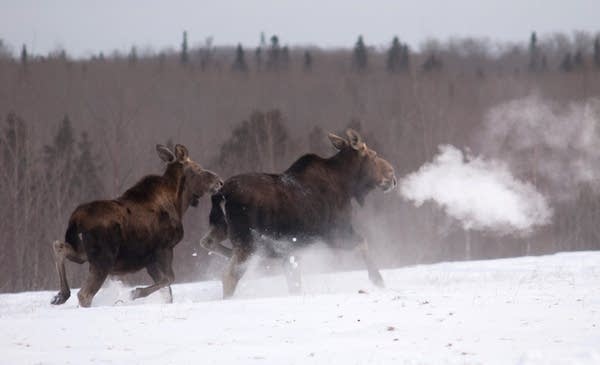Stable numbers, but Minnesota's moose are not out of the woods

The state's annual aerial survey estimated 3,030 moose in northeastern Minnesota in January, statistically unchanged from last year's estimate of 3,710. Officials were buoyed by the stability but conceded there were no signs of a rebound.
Pete Takash | Minnesota DNR file via AP
Go Deeper.
Create an account or log in to save stories.
Like this?
Thanks for liking this story! We have added it to a list of your favorite stories.


